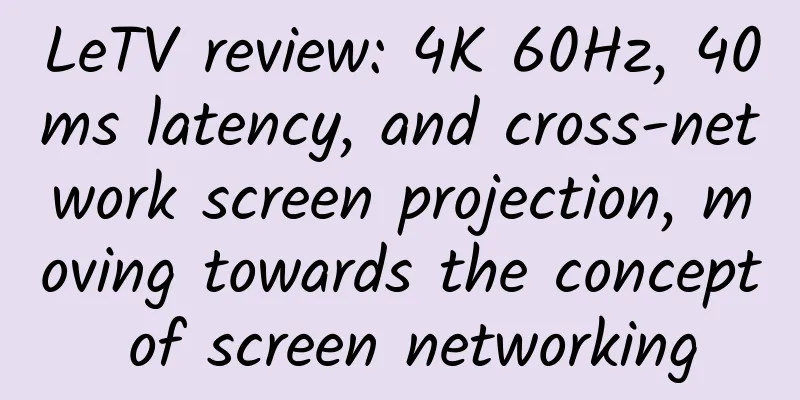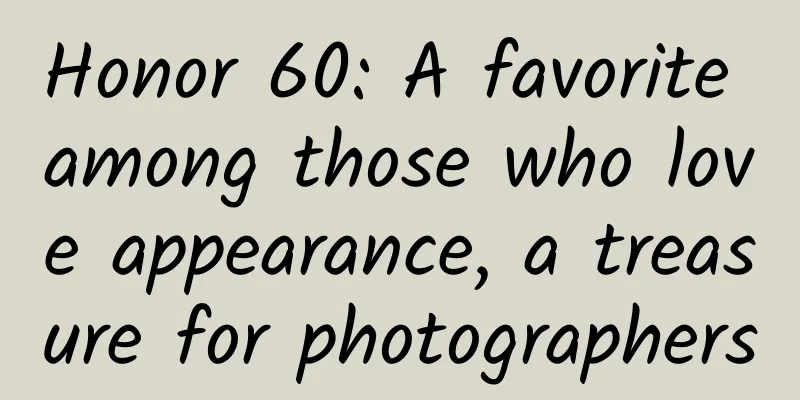LeTV review: 4K 60Hz, 40ms latency, and cross-network screen projection, moving towards the concept of screen networking

|
Nowadays, we are immersed in a world composed of display screens, including the TV in the living room, the computer in the car cockpit, the projector in the conference room, and the smartphone in the pocket. But there is no doubt that everyone is most familiar with the mobile phone screen that they use every day. With the explosion of mobile Internet content, the TV power-on rate has continued to decline. CSM monitoring data shows that the average person watched TV for 164 minutes a day in 2012, but by 2019 it was only 117 minutes. The large screen in the living room with better audio and video effects and more immersive feeling has lost out. Even though cars now have larger screens and connection methods such as Android Auto and CarPlay, people still prefer to use mobile phone navigation with more timely data updates through car mounts. The ubiquitous screens in our lives and the inconvenience of using these devices themselves constitute the most prominent contradiction between electronic devices today. Reinventing the wheel is neither realistic nor necessary. Rather than equipping each screen with computing hardware and software comparable to that of a smartphone, smartphone-enabled screens and multi-screen interaction have become the industry’s answer. Therefore, it is not difficult to understand why capital and users love LeTV Cast, the leader in the screen projection industry. With the help of LeTV's screencast protocol and software, the connection between screens breaks the shackles between scenes. The free flow of data between screens has brought more possibilities to the content industry and greatly broadened the boundaries of services. Currently, LeTV Cast covers approximately 220 million large-screen TVs, 4,000+ mobile apps, and mobile phone systems such as Xiaomi, OPPO, and vivo. On average, more than 10 million households use LeTV Cast to watch TV every day, and more than 60 million households use LeTV Cast to watch TV every month, with an average casting time of more than two hours per day. However, LeTV Cast’s vision for future screens clearly goes beyond interaction in the living room. “Starting with screen projection, but not limited to screen projection” is the development logic that LeTV has always adhered to. Therefore, LeTV has long announced its screen projection hardware "LeTV LeTou" screen projection host, which can give screen projection capabilities to all display screens with HDMI interfaces. So, in what scenarios can this hardware, which has been honed for seven years and focuses on screen casting, bring a new experience? For those smart TVs that have built-in LeTV screen casting protocol, is there still a meaning for it to exist? Let's take a look!
After opening the package, what comes into view is the LeTV host and its remote control. The lower layer is the instruction manual, warranty card, NFC screen projection sticker, as well as an HDMI cable and a power cord. Taking out the console, you can see that it adopts a design language similar to that of iPhone 5s. The metal body is chamfered and the anodized aluminum has a very delicate matte feel. For a console that is usually hidden behind the TV, the materials and workmanship are very attentive. On the front, LeTV uses black curved embossed lines for decoration, coupled with the LeTV logo, which is very artistic. It is worth mentioning that the body size of LeTV is only 6.3cm*6.3cm*1.06cm and weighs only 52g. It is very small and there is no burden at all when carrying it out. There is a single button on the right side of the device, which looks similar to the on-hook button on the iPhone 5s. Single-press, double-press, and long-press this button correspond to the functions of Home, remote control pairing, and reset, respectively. There is a Type-C power port at the bottom of the console, a UBA data port on the left, and an HDMI 2.0 port on the top that supports 4K 60Hz video output. As for the remote control, the design language is consistent with the host, and the button setting is the direction key + function key design commonly used by current TV boxes. However, because the host can be powered by the USB port of the TV host, the power on and off are consistent with the device, so there is no power button on the remote control. However, there is a very small LED light at the top, which will flash when the key is input. In terms of hardware, LeTV uses a 64-bit HiSilicon high-performance quad-core A53 processor, multi-core GPU Mali450, 2.4G/5G dual-band, and supports 802.11b/g/n/ac 2*2 dual antennas. The powerful hardware determines that compared with the weak network and computing performance of most smart TVs on the market, LeTV not only has smoother video projection capabilities, but is also capable of coping with more diversified scenarios. The ultimate hardware and software that has been polished for many years have brought three core performance advantages to LeTV: fast connection, low latency, and zero lag. LeTV comes with its own 5G ultra-fast screen projection network, providing a high-speed and stable channel for wireless network transmission. Even if there is no broadband WiFi, you can switch to the built-in 5G network by scanning the code and enjoy a low-latency, zero-stuttering screen projection experience. Low latency means that based on computing and network performance, LeTV and chip manufacturers have deeply adapted the decoding dedicated channel to support ultra-low latency as low as 40 milliseconds. Whether playing games or watching live broadcasts, the delay is imperceptible to the naked eye, bringing a smooth experience of the large-screen native content version. Especially for games and office scenes, the delay of traditional screen projection is particularly fatal, and it is currently the biggest obstacle to the popularization of multi-screen interactive functions. 0 lag means high-definition and smooth images, not just in the APP screen projection scenario. Even for the screen mirroring function that has the highest requirements for performance, network and software optimization, LeTV LeTV can achieve high-definition and smooth image projection. Not only can the TV end handle it easily, the low resource usage on the mobile phone end is also equally impressive. Long-term use will not cause the phone to overheat or lose power. In response to the impact of the mobile Internet, which is experiencing rapid development in computing power and constantly changing content formats, users have undoubtedly put forward higher requirements for the image quality, latency, and convenience of the screen projection function. In the past, the screen projection function of TVs, car computers, and projectors was either missing or not easy to use, which led to the shift of user traffic to mobile phones. They continue to be "phone addicts" at home and install a mobile phone holder in the most conspicuous place in the car. Rather than using the clumsy screen projection function, users would rather give up the experience of a larger screen and use their mobile phones for entertainment, work, and navigation. LeTV LeTV has obviously targeted users' pain points in terms of connection methods, picture quality, frame rate, etc. in screen projection scenarios, and launched the ultimate solution. The powerful hardware performance combined with LeTV's 8 years of deep experience in the screen projection industry has indeed brought an ultimate screen projection experience.
First of all, for the most popular film and television screen projection function, LeTV and LeTou have the same hardware and software, and support almost all mainstream video software platforms for screen projection. The difference is that with the support of 5G WiFi, LeTV's screen projection responds extremely quickly, almost instantly. And no matter it is video software or system album video, the progress bar can be dragged smoothly. When you release the progress bar on the mobile phone, it will jump immediately on the TV screen, which is no different from playing local video (the test environment is China Telecom 100M broadband, and the router is TP-Link WDR8500). Of course, the continuous optimization of the third-party video apps in recent years has also contributed to this. However, on many smart TV systems, the bug that the screen projection video will start playing from the beginning when the progress bar is dragged on the app still exists. It can only be said that many manufacturers still do not pay enough attention to the screen projection function. The picture quality of the cast video is exactly the same as the mobile phone video source, without any reduction. It supports up to 4K 60Hz video. LeTou also supports Bluetooth speakers, allowing users to enjoy cinema-level immersive audio-visual enjoyment in the living room. It is also worth mentioning that the videos cast from the mobile phone can also be played at double speed using the menu button on the LeTou remote control. The plots you don’t want to watch can also be played at 2x speed on TV. This is also a must-have feature for some drama users. The fact is that many users prefer to use their mobile phones to watch movies and TV series at home, because screen projection lacks many functions and is inconvenient to use. LeTV has innovated many functions to address user pain points. In addition to the double speed, when watching TV series, screen projection now also supports the continuous broadcast of episodes, so you don't need to manually select episodes every time, which is very convenient. Moreover, using software to cast the screen is essentially sharing the video URL to the TV for playback. Although the mobile phone APP can control the playback, the TV playback can be independent of the mobile phone. Notifications will not be synchronized to the TV, and turning off the phone will not affect the continued playback of the video. Users can continue to browse their phones while watching the video. In addition to video casting, LeTV also supports mobile phone screen mirroring, which completely restores the content displayed on the mobile phone to the TV screen in a 1:1 ratio. Users can not only watch Douyin on TV, but also play games on TV. "Honor of Kings" and "Chicken Dinner" can both be played on the big TV screen. With the support of high-performance processors and multi-core 2D/3D acceleration engines, LeTV can reduce the screen projection delay to 40 milliseconds, which is almost imperceptible to the naked eye. Nowadays, more and more native blockbusters are available on mobile phones, and many independent PC games are also available on mobile phones, giving players more choices. By casting the mobile phone screen and using a Bluetooth controller, players can play console-level games on TV. If you think that "console level" is not enough, you can even play console 3A masterpieces directly on the TV through screen projection of the cloud gaming APP, which can save you an RTX 3090 and PS5. Not only that, LeTV's mirrored screen projection can not only be used under the same WiFi, but also can achieve cross-network screen projection through cloud mirroring, sharing the mobile phone or computer screen to the TV in real time in a different network environment. If the elderly or children at home do not know how to use screen projection, we who are in a different place can help them remotely project the screen for playback, so that family affection is not restricted by geographical location. In the living room scenario, the screen projection function allows large-screen TVs to reap the many benefits of the evolution of mobile Internet. For users, the connection between large and small screens is also a kind of relief for the eyes. For example, in the field of online education, which was rapidly stimulated by the black swan of the epidemic, with the support of screen projection technology, children are no longer forced to focus their eyes on the small blackboard on the small screen. The large screen can bring users an immersive feeling like a real classroom, creating a more interesting and interactive learning atmosphere. A commuting and business travel helper and a car, airplane and hotel experience savior
For example, commuting is also a scenario where screen projection can be very useful. Nowadays, many cars are equipped with larger car screens and even support HDMI input, so users are no longer forced to use car navigation and entertainment systems with poor systems and slow updates. Unfortunately, not all mobile phones support HML output, which is where LeTV and LeTV can come in handy. With the screen projection function, users can use their familiar mobile phone navigation and even audio and video entertainment functions on the car computer. Compared with the limited functions of Android Auto and CarPlay, the native system screen projection is undoubtedly more handy. After receiving the party address on WeChat, you no longer need to enter it into the car computer in a hurry. You can directly use the mobile phone navigation and screen projection to complete it. Use LeTV to project TV shows and movies onto the car's large screen so that all passengers can enjoy the entertainment together and long-distance trips will not be boring. You can also bring the LeTV, which weighs only 52g, with you on business trips. With the help of screen projection, the hotel TV can be transformed into a large entertainment screen that is no different from the one in your home living room. Although almost all hotels are equipped with televisions, I believe that very few people actually use them. Why? A movie that was released many years ago is also charged! I can understand that this is also one of the ways for the hotel to generate income, but adhering to the principle of thrift and diligence, it is obviously more attractive to bring 52g of LeBo LeTou. After simple installation and networking, the hotel TV can also be turned into a free entertainment center, where watching movies and browsing Douyin are no problem. Hotel TV is no longer a mere decoration, but makes the business travel process more colorful.
In a conference room environment, users no longer need to carry complicated cables and equipment. A compact LeTV Live Broadcast, combined with a mobile phone, can realize screen projection and interaction in office and meeting scenes. LeTV supports screen projection of office documents such as Word and PPT. Users can directly project the files to be presented in the meeting to the meeting screen through the APP. The maximum resolution supported is 1080p, and the icon content is displayed clearly. Not only that, the APP also supports laser pen and brush functions. Users can directly control the laser pen on the mobile phone or tablet, or use the brush to mark on the document, which is convenient for demonstration and explanation. LeTou even has a reverse control function. After turning on the "Allow control option" in the APP, you can even use the LeTou remote control to control the playback of documents without swiping around on the mobile device. Of course, document projection also supports cloud projection on other networks, and will call the mobile phone screen recording interface, which is equivalent to "live broadcast" in a different location. When conducting remote meetings, all users can remotely project the content on their mobile phones to the large screen or projector in the conference room through various means such as scanning codes and casting codes, allowing users to easily cope with complex corporate meeting scenarios. LeTV has also given very thoughtful consideration to the privacy issues of screen projection. LeTV can set the screen projection source display and "screen projection anti-harassment" to easily manage the "black and white list" of screen projection devices. It can also set up screen projection permission inquiries for each connection to prevent devices from being projected to play "inappropriate" content in public places. There is no doubt that computers, as productivity tools, may appear more frequently in office meeting scenarios. LeTV Cast has launched dedicated software for Windows devices, while MacOS can use the system's built-in Airplay protocol for screen casting. In the same network environment, according to the test, the performance of computer screen projection on TV is equally excellent, with clear picture quality and extremely low latency, and there is no problem even using a mouse through the projected screen. In addition to screen mirroring, you can also set the projected screen as a separate display through computer screen projection. In this way, the computer is equivalent to having an extra extended screen. In addition, we can also set the conference room screen as a PPT presentation screen and use the Apple computer as the presentation background, which is very convenient.
Although the day when "all screens have the ability to project screens" is still a long way off, LeTou, which weighs only 52g, can already enable all screens with HDMI interfaces to demonstrate the ability to "interconnect thousands of screens." Although most smart TVs on the market already have the ability to cast screens (Powered by LeTV), and there is no shortage of TV boxes with built-in screen casting protocols, LeTV, as a leader in the screen casting industry, has been honing its skills for eight years and its LeTV products are at their peak as soon as they debut. Features such as 4K picture quality, ultra-low latency, and the ability to cast screens without a network connection have almost helped users eliminate all the "thresholds" that may be encountered in screen casting, and have achieved the ultimate in screen casting effects and methods, which are sufficient to cope with screen casting scenarios such as home entertainment, commuting cars, corporate meetings, and can perform screen casting tasks excellently. Nowadays, our life scenes are surrounded by massive screens, but only a small mobile phone screen has won everyone's hearts. This is a tight shackle for the industry, both for the diverse needs of users and for content providers who continue to expand content margins. In the future, the barriers between thousands of screens will inevitably be broken, and there are trillion-level technological opportunities hidden in it. At least for now, screen projection technology is a powerful means to realize this vision. Of course, the development of the industry and the foresight of technology are still a bit far away for the majority of users. Now, through this review, I just want to tell you that the only thing between you and the free flow of content between screens is a professional projection host from LeTV. As a winner of Toutiao's Qingyun Plan and Baijiahao's Bai+ Plan, the 2019 Baidu Digital Author of the Year, the Baijiahao's Most Popular Author in the Technology Field, the 2019 Sogou Technology and Culture Author, and the 2021 Baijiahao Quarterly Influential Creator, he has won many awards, including the 2013 Sohu Best Industry Media Person, the 2015 China New Media Entrepreneurship Competition Beijing Third Place, the 2015 Guangmang Experience Award, the 2015 China New Media Entrepreneurship Competition Finals Third Place, and the 2018 Baidu Dynamic Annual Powerful Celebrity. |
>>: With the support of AI, Baidu Smart Input makes communication more vivid and work more efficient
Recommend
With this material, you will never have to worry about not having water to drink?
Produced by: Science Popularization China Author:...
It’s too dazzling to use mobile phone at night. Is it useful to turn on night mode?
In the information age, mobile phones have penetr...
Uncovering the secrets of Asia’s “water tower”: majestic yet fragile
Your browser does not support the video tag The Q...
There are four stages of user growth, like falling in love?
Is user growth like falling in love? It's ind...
The passion of programmers is actually a kind of pain
[[147859]] I am not a "passionate programmer...
Back to school season, these safety tips should be kept in mind! - Traffic
The new semester is about to begin. Children on t...
Comprehensive understanding of B-side product design: basic literacy
Today, the influence and role of the Internet are...
Is it always fun to be on vacation? Not necessarily!
The May Day holiday is coming to an end in the bl...
How much does it cost to create a homestay mini app in Zhengzhou?
How much does it cost to produce a Zhengzhou home...
BAT is currently leading in China's autonomous driving market, while traditional car companies seem powerless
Autonomous driving is an important part of the up...
After radiotherapy, heart examination should be performed every year! International consensus
Nowadays, due to the significant progress in canc...
Autonomous driving received $5 billion in investment last quarter, exceeding the total of the past four years
According to BloombergNEF data, private market in...
Gaia-0 Basic Beginner Short Video Monetization Training Camp
Gaia-0 Basics Novice Short Video Monetization Tra...
Science poster: How does an infrared forehead thermometer measure body temperature?
Science poster: How does an infrared forehead the...
Build a user operation system in 5 steps!
User operation is an invisible skill that many ne...









